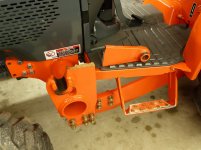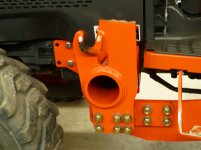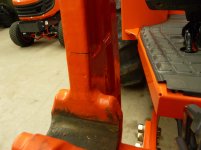kcender
Platinum Member
I think you are referring to my post about the bucket being vertical to help the stabilizers.I don't know what the manual recommends but putting the bucket in full dump position,when using the backhoe,will cause it to anchor itself more.This can be bad if you swing the rear of the tractor sideways with the backhoe.Think of the stresses this would put on your loader and the extended bucket cylinder when the bucket wants to move sideways,but can't.If the bucket is laying flat on the ground it will slide around and cause less stress on the loader but still stabilize the front of the tractor.When I had my L3240 with FEL and backhoe I managed to break the FEL loader mount completely in two pieces by swinging the rear of the tractor with the backhoe.This was with the bucket laying flat but it got caught on a rock.This will give you an idea of what can happen by having the FEL bucket dug into the ground when using the backhoe.These machines are tough but can still be damaged.



